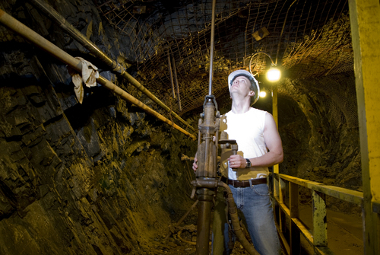At Energy sources they are instruments and resources that can transform or be transformed into energy, such as muscular work (of men or animals), the sun, water, wind, electricity, heat, among others.
Since ancient times, man has used the sun's heat as a source of energy to warm up and practice his activities. Over time, he learned to use fire as well, mainly to keep warm in cold weather and to prepare food. Thus, as time has passed, human beings have been discovering new and more modern ways of producing and using energy, in a process that is still ongoing.
For a better understanding of the subject, the energy sources are classified into renewableand not renovable. Renewable sources are those that do not run out or that can be reused, while non-renewable sources are those that, sooner or later, will run out.
1. non-renewable sources
Among the main and most important non-renewable sources, we can mention oil, mineral coal, nuclear energy and natural gas.
Oil: it is considered the main natural resource used by man. As an energy source, it is transformed into fuel for vehicles and generators. It is removed from the subsoil (usually ocean regions) and later refined, being transformed into gasoline, diesel oil and some products, such as plastic and synthetic rubber.
Mineral Coal: is also extracted from the bottom of the soil, as it was formed after the remains of plants and trees were buried, spending thousands of years under the Earth. It is used for the production of electrical energy (in the so-called thermoelectric) and also as a heat source.

Employee working in a coal mine
Nuclear energy: Energy produced in a nuclear reactor through the breaking of uranium atoms. This breakdown releases energy that is converted to electricity. Despite being an expensive energy source and considered dangerous, due to the risk of radioactivity leakage, it has the advantage of not emitting pollutants into the atmosphere.
Natural gas: usually found in underground deposits or produced from agricultural products (called, biogas), it is used both as fuel for automobiles and for power generation electric.
2. Renewable sources
Among the renewable sources, hydroelectricity, wind energy, solar energy and biomass deserve to be highlighted.
Hydroelectricity: It uses the force of the waters of a river – which must have part of its course dammed, flooding a large area – to move the turbines that, when rotating, produce energy.

Three Gorges Power Plant in China: The World's Largest Hydroelectric Power Plant
Wind energy: The force of the winds moves the giant propellers, thus moving an electrical energy generator. It is considered one of the cleanest energies, despite generating noise pollution, killing birds and interfering with radio and TV waves. It does not emit pollutants and does not occupy large areas.
Solar: Solar energy is formed by very thin plates, usually composed of silicon. When they are heated by the sun, their atoms produce an electrical current that is conducted as a form of energy. The only disadvantage of solar energy is the high cost of producing and installing the necessary equipment.
biomass: is an energy source that exists thanks to the use of organic materials, such as animal and plant waste. Sometimes this biomass is burned, generating heat, which is converted into electricity. Another procedure is to stimulate its decomposition – through biodigesters –, which produces methane gas, which can also be used to produce electricity. Check out:
Biomass energy production scheme *
Knowledge about existing energy sources helps us to better understand how our society works. Do you know which types of energy sources are used by you and your family every day?
__________________
Image source: Wikimedia Commons
By Rodolfo Alves Pena
Graduated in Geography
